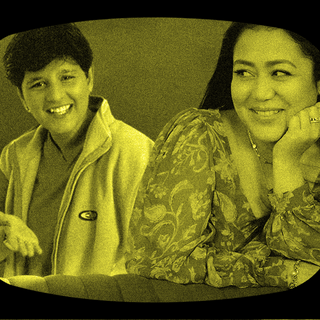
Most Employers Doubt Hybrid Workers’ Productivity, Study Suggests
A new survey found people are working more, attending meetings, and completing work — but bosses still seem to distrust their productivity.

Work-from-home employees are in a bind. Studies show they’re working enough (if not more than they used to, before the pandemic), but there appears to be a disconnect in the way theiremployers perceive their work. As many as 85% of employers are distrustful of people’s productivity in hybrid work or remote work scenarios — set-ups where the person is not physically present in the office space — according to a survey.
Amid “return to office” tusslesbetween bosses and workers, the growing employee-employer disconnect around hybrid work has played out anecdotally over the last year, but a new study conducted by Microsoft documented the extent of it. Even as employers think people who work remotely aren’t working enough, 90% of such employees think their performance was at par with expectations; if anything, they were working more hours, attending meetings, and completing the required amount of work. While the misperception seems to be global, within India, as many as 91% of employers are not confident about remote workers’ productivity.
The survey looked at 20,000 full-time and self-employed people in 11 countries, including India. From the employees’ perspective, there was little incentive to visit the office considering working from home every now and then was cheaper, easier, and ensured a sense of personal well-being. 91% of Indian employees surveyed went to the office purely to socialize with other people. Most of them agree there needs to be a better reason to go to the office, all while employers are cudgeling their brains about how to get people back to the office. The findings echo a distrust between the employer and employee, presenting the future of work as an irreconcilable space where ideological biases and the desire for control may overshadow one’s competence.
The problem with this distrust is simple: it has to do with how the performance of productivity has guided much of work culture over the years. Employees’ well-being becomes collateral damage in this quest for faux productivity — even while remote, they’re compelled to tangibly appear productive so as to justify their absence in office. And this digital presenteeism helps no one; employees are pushed to participate in a “productivity theater” of sorts, where people feel compelled to overtlydisplay their busyness. Slack statuses always appear green; presence in meetings, necessary and unnecessary, is earmarked; mails are sent at odd hours; conversations are scheduled at overlapping times during the day — just to perform a narrow idea of productivity. And it’s not just harming employees, but organizations too.
“On their own, these are small expenditures of time, and some of them are useful. En masse, they’re a dizzying waste of time. Workers everywhere are feeling burnt out by this behavior. In other words, fears about lost productivity could cause lost productivity,” as Rani Molla explained in Vox. A July survey found people waste an extra 67 minutes online, on top of their regular working hours, each day to simply show they are working, a trend that exacts time and energy.
Related on The Swaddle:
Employers May Favor People They See In Person. How Does This Impact Pandemic Work Culture?
“Workers are desperate to avoid suspicion that they aren’t working hard enough, and they’re falling back on the same habits of presenteeism, adapted for the digital workplace. The costs are huge, resulting in unhappy, burnt-out employees, reduced retention, and lost productivity,” said Tariq Rauf, founder and CEO of Qatalog, who conducted the survey with GitLab.
Productivity theater has been a mainstay of the office. It can be attributed to a mistaken idea of productivity, where rewards are meted out to those who look busy and clock in face time with their employers. The marker of a good work ethic quickly morphed into staying late or mindlessly clacking away on the keyboard; the presentation of work was important, because people were seeing it and making value judgments. It has to do with the proximity bias, a blind spot in judgment where the (incorrect) assumption is that people make for better workers if they are physically present in the office and their employers can see them doing their job.
This, in turn, shows the shaky ground on which the productivity argument itself stands: why is it that despite results showing otherwise, the suspicion remains? Arguably, it has less to do with results, and more to do with control. Writing for The Atlantic, Ed Zitron noted how the fight for going back to office may be rooted in hierarchical work culture. Managers’ jobs — controlling, overseeing, and surveilling employees — are best performed in person. In remote situations, this practice is rendered obsolete.
Moreover, the narrative around productivity becomes a tacit way of disincentivizing remote work.As The Swaddle pointed out earlier: “This unhealthy assumption leads to a view that people close to the employers or team leaders are more qualified and productive than those in remote settings. This has a domino effect: these ‘physically’ present employees may get the chance to sit in more meetings, interact more with higher-level executives, get more opportunities as they appear ‘harder working’ and more ‘trustworthy.’ It becomes a matter of convenience to ask an in-person employee their opinion or hand them tasks rather than log into Slack to communicate with remote employees.” Worryingly, the July survey also found that more than half of the knowledge workers were worried their contribution will go unnoticed, further feeding into the idea that they have to perform work during certain hours of the day.
This fixation on presenteeism not only precludes people from accessing opportunities, but also negates the conversation around people’s well-being. Amid the many conversations around the future of work, the aspect of affording flexibility to people has stood resilient. This is a culture of asynchronous working, where people can settheir own work hours and don’t feel the crushing weight of being responsive — or even surveilled for their behavior — all the time. In July, 54% of people felt unable to shift to this culture because their managers and senior leadership “prefer a traditional culture with employees in the office.”
Work culture and the hypothesized changes present remote or hybrid work as this faux binary to traditional office culture. What’s lost is the nascent desire for flexibility, for disrupting the traditional hierarchy of employer-employee and letting people mold their work life according to their new realities.
Rauf cautions: “The pandemic gave us a once-in-a-lifetime opportunity to reshape our working lives and cast aside vestiges we learned in the office era, yet it’s clear that we are repeating the same mistakes.” Work is an orchestral performance too, and there is wisdom in letting people be the conductors of their own performance.
Saumya Kalia is an Associate Editor at The Swaddle. Her journalism and writing explore issues of social justice, digital sub-cultures, media ecosystem, literature, and memory as they cut across socio-cultural periods. You can reach her at @Saumya_Kalia.
Related


Can We Move On: From Single, ‘Older’ Women Serving as Cautionary Tales
